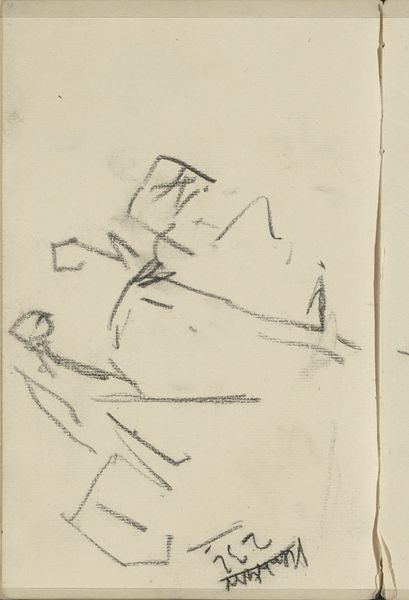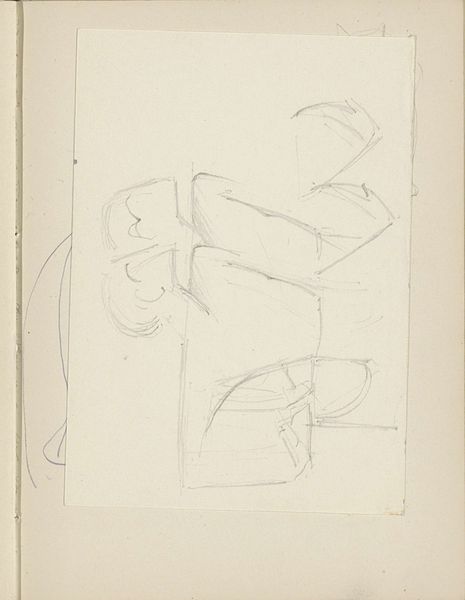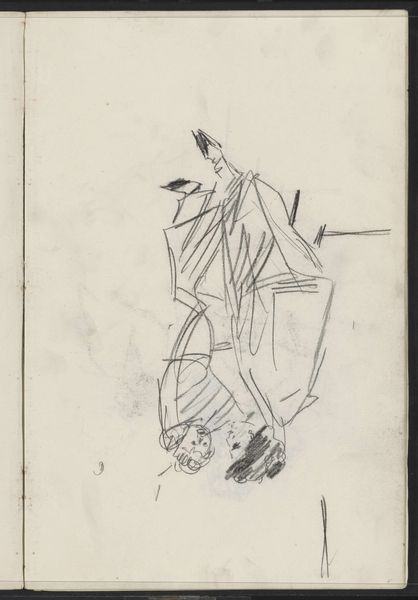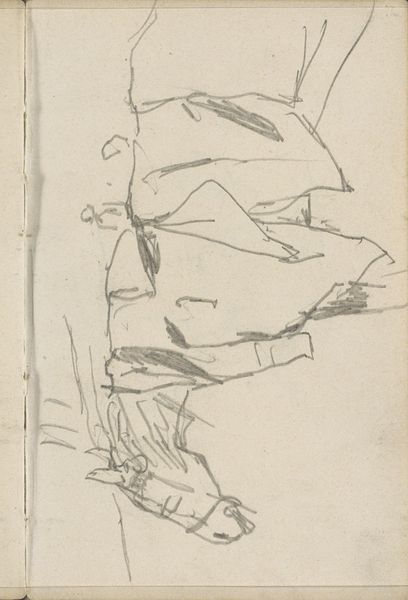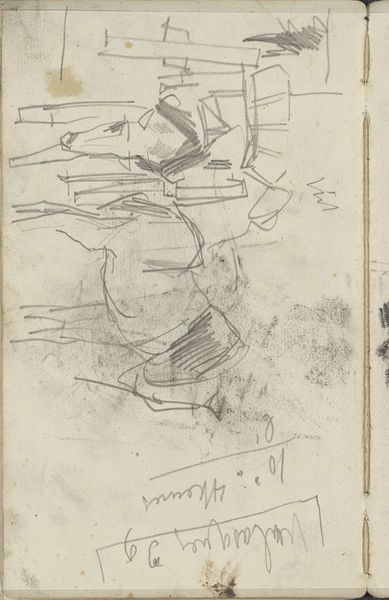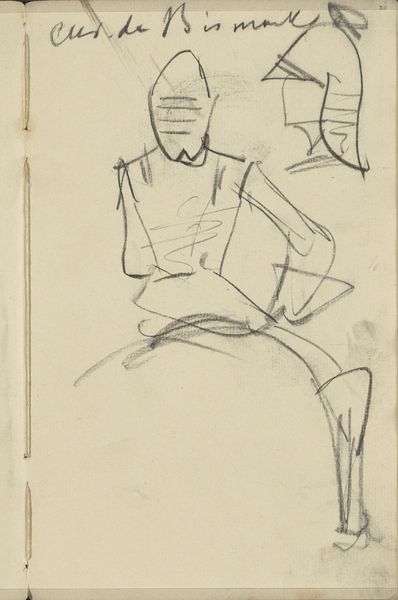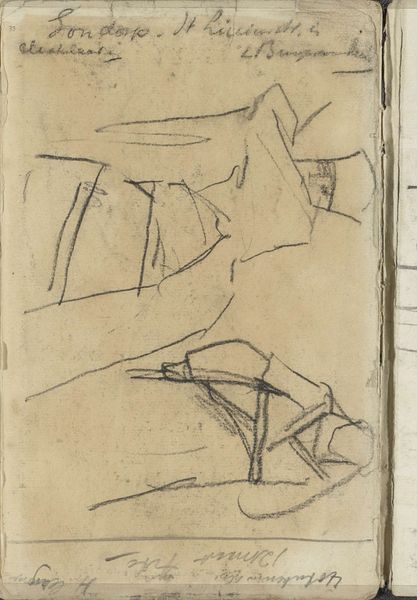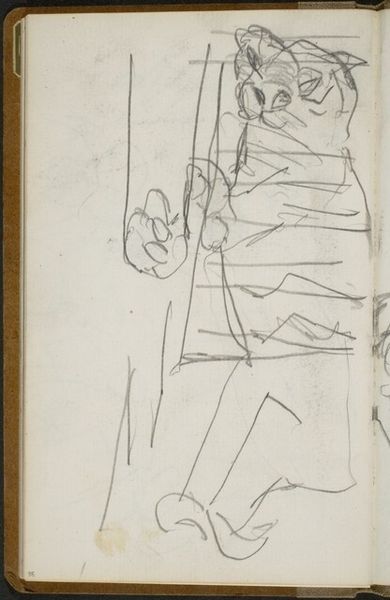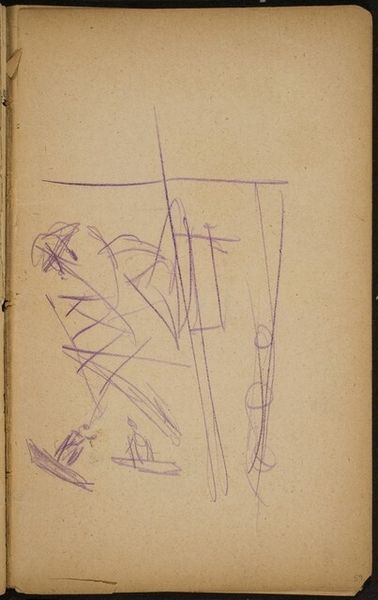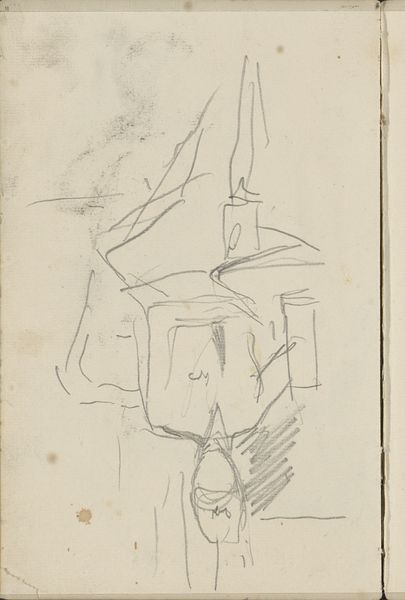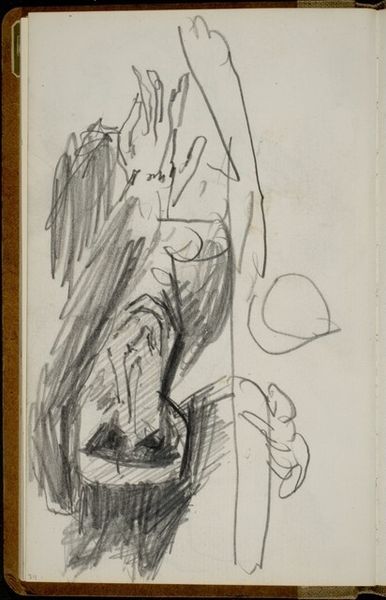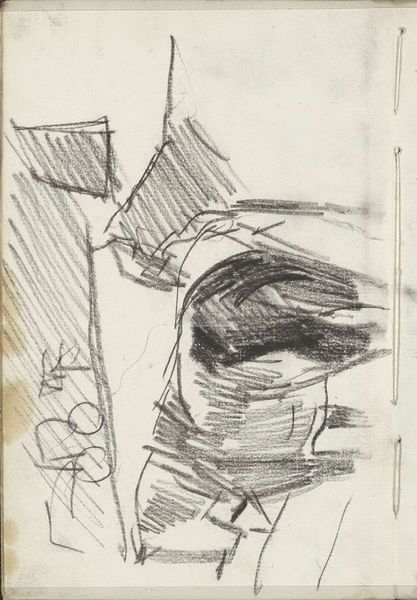![Figur im weiten Mantel (Figure with Coat) [p. 18] by Max Beckmann](/_next/image?url=https%3A%2F%2Fd2w8kbdekdi1gv.cloudfront.net%2FeyJidWNrZXQiOiAiYXJ0ZXJhLWltYWdlcy1idWNrZXQiLCAia2V5IjogImFydHdvcmtzLzI2ZTgxM2M3LTkyMTYtNDM5NC1hMWM1LTAyNTNhYWNkY2Y1Zi8yNmU4MTNjNy05MjE2LTQzOTQtYTFjNS0wMjUzYWFjZGNmNWZfZnVsbC5qcGciLCAiZWRpdHMiOiB7InJlc2l6ZSI6IHsid2lkdGgiOiAxOTIwLCAiaGVpZ2h0IjogMTkyMCwgImZpdCI6ICJpbnNpZGUifX19&w=1920&q=75)
drawing, pencil
#
portrait
#
drawing
#
ink drawing
#
pen sketch
#
figuration
#
pencil
#
expressionism
Dimensions: sheet: 18.1 x 11 cm (7 1/8 x 4 5/16 in.)
Copyright: National Gallery of Art: CC0 1.0
Editor: So, we have here Max Beckmann's "Figur im weiten Mantel," or "Figure with Coat." It’s a pencil and ink drawing. The swiftness of the lines makes it feel like a fleeting impression. How do you interpret this work within the broader context of art history? Curator: This piece speaks volumes about the changing role of art in society, especially considering the turbulent times Beckmann lived through. The sketch itself appears raw and immediate, but let’s consider when and why this image might have been created. The Expressionist style points to an interest in portraying inner emotion and psychological states. Given the sociopolitical climate, especially around the World Wars, how might the public’s reception of figuration like this have been shaped? Editor: That's interesting! So the historical backdrop becomes integral to its interpretation, as maybe depicting the sense of instability of that time? The rough, unfinished quality gives a sense of anxiety to me. Curator: Precisely! Consider the Expressionists' focus on subjective experience versus academic traditions. Was it simply a personal study, or something more deliberately geared towards a wider audience through public exhibitions or printed publications? Editor: I guess the intention would have been to challenge traditional artistic conventions. Looking at other drawings by Beckmann I see a similar visual language: using a limited palette with strong, dark strokes, and distorted figures that create a sense of unease. This would directly contradict any conservative social expectations. Curator: And thinking about where these images were displayed -- were these images being actively collected and shown in larger museums at the time? Did his images contribute to the democratization of artistic spaces? It also seems to reflect a time where established social order was under question. Editor: I never thought about it that way! It sheds new light on how to understand his work and Expressionism. Curator: Right! Seeing art as shaped by -- and shaping -- broader historical, cultural, and even institutional dynamics makes art history alive. It is powerful!
Comments
No comments
Be the first to comment and join the conversation on the ultimate creative platform.
